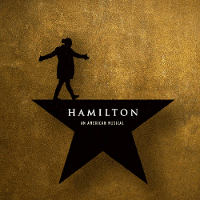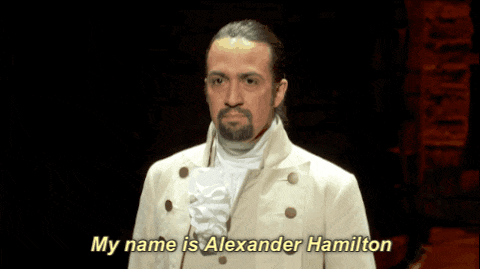by: Emily Moseley
In the Hamilton the Musical, there are lots of things going on, especially repetition. This musical is, well, full of songs that will naturally repeat lyrics at some point; however, Lin Manuel Miranda draws our attention to a few specific things in Act I with the ways he keeps coming back to them. The show is full of musical, verbal, and visual repetition. This is how he quickly establishes a relationship between the audience and the show because you become familiar with things the more you hear it. I think the rule is that you have to hear something seven times before you really memorize it; well, believe me, I have fully memorized some of these songs by now.
And this starts with the very first song: “Alexander Hamilton,” probably the most famous of them all. It establishes so much in just four minutes but has a distinct tune at the very beginning that you can hear echo throughout the rest of the show. Every time this tune plays you know that a question is being asked just like in the first song:
“How does a bastard, orphan, son of a whore and a Scotsman, dropped in the middle of a forgotten spot in the Caribbean by providence, impoverished, in squalor grow up to be a hero and a scholar?”
-A. Burr
Just by hearing this throughout the rest of the show, you’ll know what to expect. Another cue Miranda slips in there would be the choreography during “My Shot.” In this song Miranda is showing the audience a direct contrast between Hamilton and Burr (which is a constant theme in the musical) as well as giving up some choreography to look for. This is like a visual vocabulary for the audience to have as the show goes on. With a story like this you can’t be too careful in noticing all the details because of how truly complex the show is and all the information it tries to unpack.

The sheer timeline of the show is why it is so fast-paced and Miranda might have not been able to get everything into three hours if it wasn’t a hip hop musical with the ability to hide meaning in the dance moves. The dance move from “My Shot” repeats through the show letting us know that Hamilton knows what he wants and nothing can stop him from reaching his goals.
This is the kind of genius that Miranda hides in his show that adds so many layers to the meaning, and lets the audience learn things about the characters through repetition.







